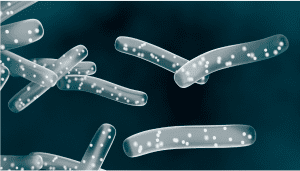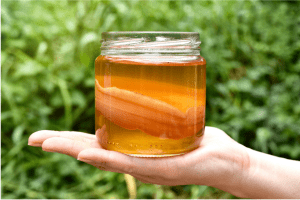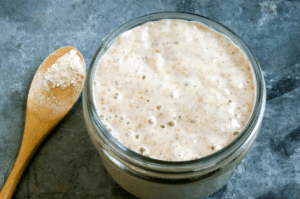Hello, Fellow Alchemists of Fermentation!
In our last wandering of minds, we delved into the fascinating world of yeast – our microbial comrades that magically transform sugars into alcohol and carbon dioxide.
But yeast is not the only conductor of this microscopic band. Today, we turn our attention to its less celebrated yet equally intriguing counterpart: the bacterium!

Consider Lactobacillus, a bacterium whose name contains its primary purpose – converting lactose and other sugars into lactic acid. You may recognize this humble acid as the guest artist that paints your palate in your favorite sour beer or yogurt. Unlike yeast, which focuses on the generation of alcohol and carbon dioxide, Lactobacillus and its mates take us down a different metabolic pathway – one that produces no effervescence but offers an intriguing flavor profile.
SCOBY and Kombucha
Now, let’s address the role of bacteria in a community setting, such as in kombucha. In this fascinating concoction, you’ll find a Symbiotic Culture Of Bacteria and Yeast, or SCOBY. Here, yeast and bacteria collaborate harmoniously. The yeast goes about its usual task of turning sugars
There’s that “Anaerobe” Word Again…
And what about oxygen, you ask? Bacteria are even more varied in their preferences than yeasts. Some are obligate anaerobes, meaning they will *not* work in the presence of oxygen. Others are more flexible; these facultative anaerobes, like yeast, are comfortable in both the presence and absence of oxygen.
So Many Possibilities
This adaptability enables bacteria to function in a variety of fermentation contexts. Many of us have tried sour beers and probably chatted about the pros and cons of souring in the kettle versus in the fermenter. One of our customers showed me a cool trick: using bacteria from a little bit of unmilled grain added to the mash tun overnight to sour the mash before moving it to the kettle (thanks Antony!).
Many winemakers are familiar with Vinaflora (Oenococcus oeni), a commercial range of bacteria used to manage malolactic fermentation (converting malic acid to lactic acid). This is essential for improving stability and enhancing the sensory attributes of certain wines. It is especially critical for red wines and some styles of whites, like Chardonnay. Winemakers sometimes let wild bacteria contribute to fermentation, a method that’s popular in the natural wine movement.
Sauerkraut requires nothing but salt and cabbage. The salt draws out the natural juices of the cabbage, creating an ideal anaerobic environment for our bacterial allies. Hopefully, you were able to join us when PA Nick Bradley presented an online session around sauerkraut and its benefits to our gut health.
Several of our customers are homebrew experts in the Japanese art of making sake. Here, a mold called Aspergillus oryzae break down the starches in koji rice to fermentable sugars, allowing sake yeast and lactic acid bacteria to complete the fermentation. They are so complex and tasty!
If you have a penchant for spicier things, kimchi can be your canvas. It blends spices, salt, and vegetables in a joyful bacterial symphony. Kimchi is similar to sauerkraut in that it’s made with cabbage, but it brings different ingredients, textures, and flavors to the finished product.
Breadmakers, your sourdough starter is a cultivation arena for both yeast and lactic acid bacteria. They work in harmony to give your bread that signature tang.
And for the dairy lovers, ah, cheese – a whole different universe, full of bacterial complexity. From the blue veins of Roquefort to the creamy texture of Brie, bacteria are the unsung heroes that add nuance and depth.
New Members of your Band
I hope these notes stir your creative homebrew ideas. As you venture forth into your own experiments with fermentation, don’t think of yeast as your only bandmate. Check out our homebrew bacteria, SCOBYs, koji rice, and souring yeasts on our online store, and invite them to join the ensemble. You’ll find that their contributions, though perhaps less well-known than yeast, add layers of complexity that make each sip or bite a journey of discovery.
Please do Share!
We’d love to hear about your fermentation experiences with bacteria! What creative concoctions have you been whipping up in your lab – er, kitchen? Drop your stories, recipes, or questions in the comments below.
Cheers!




